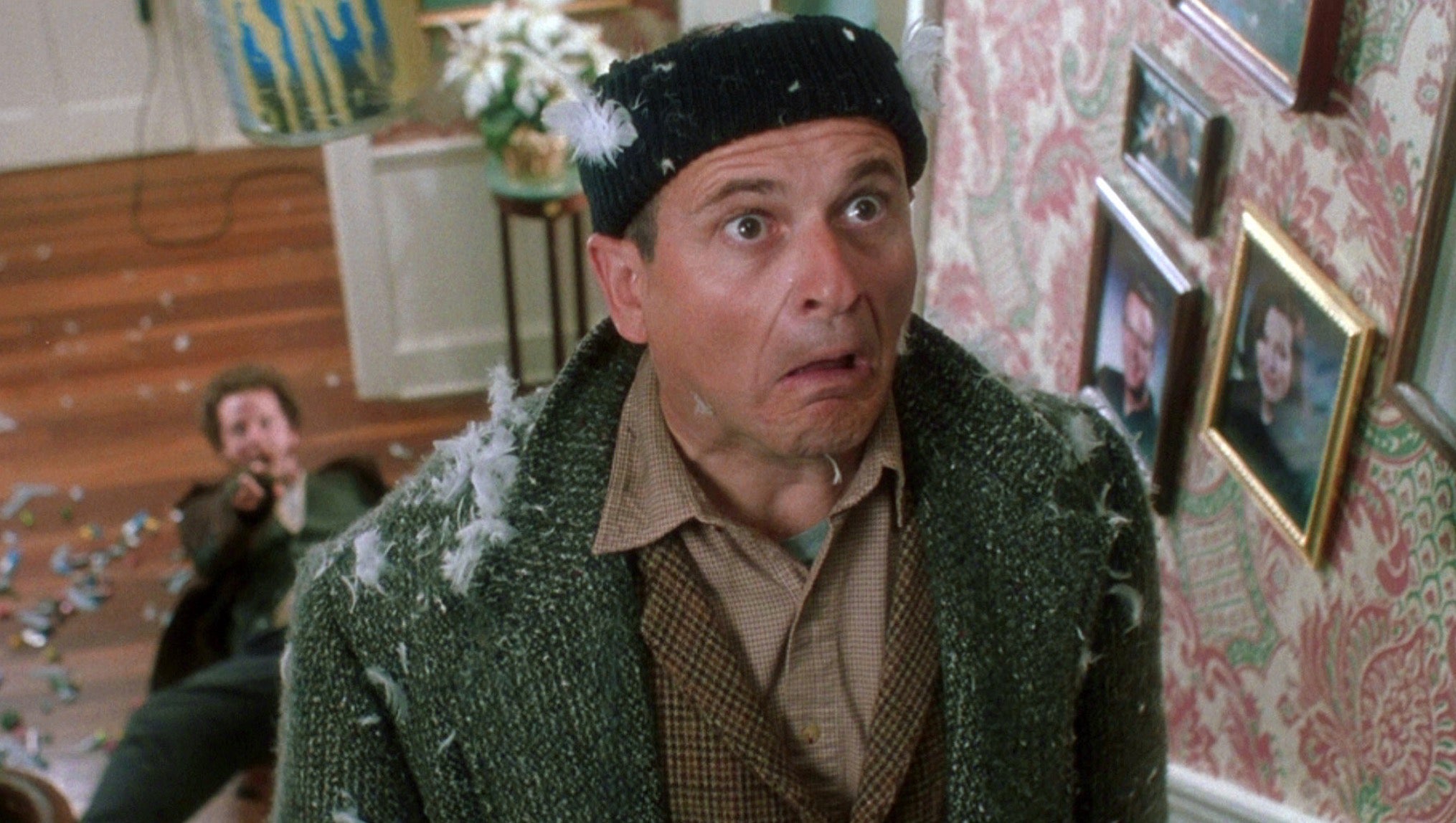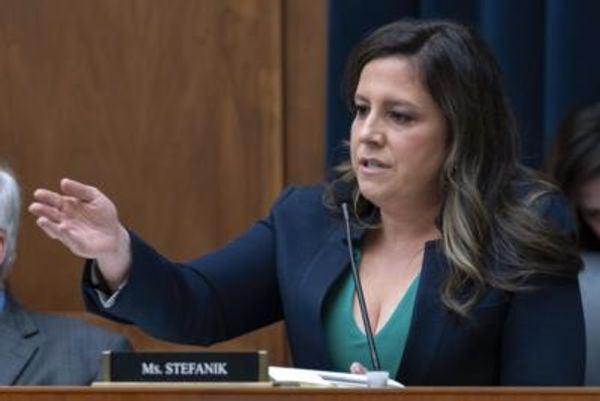
Illinois statute 720 ILCS 5/7-2 asserts that “a person is justified in the use of force against another when such conduct is necessary to prevent or terminate such other’s unlawful entry into or attack upon a dwelling”.
On Christmas Eve, 1990, in the outskirts of Chicago, a fictional eight-year-old called Kevin McCallister extravagantly put this state law to the test.
Home Alone returns to cinemas this week. It’s a cautionary tale of how neglecting one’s child can lead them to devise elaborate and whimsical ways to inflict human suffering.
Accidentally left behind when his family scrambles to catch a flight, Kevin (Macaulay Culkin) must defend his home from two suicidally persistent robbers, Harry (Joe Pesci) and Marv (Daniel Stern). He does so with flair, rigging a series of sadistic, Rube Goldbergian traps while still remembering to leave milk and cookies out for Santa. Doorknobs are heated to burning temperatures, staircases are tarred and spiked, and light switches are altered to drop scalding hot steam irons from the ceiling.

“This is a very serious and potentially critical injury,” a doctor recently diagnosed of the flamethrower-to-scalp prank Harry suffers at the hands of the cherubic evil genius. “His skull could melt off the top of his head.”
Kevin’s arsenal of slapstick traps make up the bulk of the movie, but it’s the lead up to them that hits the sweet spot with audiences and has made Home Alone such an enduring Christmas classic. For those of us fortunate enough to have attentive parents, who didn’t get a mischievous thrill out of being left home alone? The moment the front door closed you were almost paralysed by opportunity, every hitherto off-limits area now yours to explore, be it basement or bedside table.
In a festive film dud such as this year’s The Christmas Chronicles, the most transgressive the protagonist kids would have been while unattended is to not replace the lid on the cookie jar. But Home Alone was written by John Hughes, a filmmaker with an apparent total recall of the childhood experience; the man behind 1980s coming-of-age hits The Breakfast Club, Sixteen Candles and Ferris Bueller’s Day Off. Relishing his freedom, Kevin fires BB guns, flicks through his brother’s Playboy magazine, and watches an R-rated gangster movie.
This film-within-a-film, Angels with Filthy Souls, has become a fond footnote in cinema history, its infamous line, “Keep the change, ya filthy animal!” still being regularly quoted. The love for Angels with Filthy Souls is mostly down to the audacity of its existence. 20th Century Fox could so easily have used a clip from one of the 1940s noir films being aped, but Home Alone‘s director of photography Julio Macat persuaded director Chris Columbus to go bespoke.
“We had nothing to lose – we went for it,” Macat told Vanity Fair of the faux gangster flick’s one day shoot. “I believe the title was decided upon only because we needed to create a label for the tape Kevin puts in the VHS player,” art director Dan Webster added. An homage to James Cagney’s Angels with Dirty Faces, Angels with Filthy Souls got its own sequel in Home Alone 2, Angels with Even Filthier Souls.
After the novelty of ice cream and violent movies wears off, Kevin McCallister’s initial delight at being home alone dissipates. He soon starts missing his family, setting up for a tearful reunion with his mother, and the movie becomes entirely conventional.
Critics were not as spellbound as you might expect from a film with such longevity (Kevin would turn 37 next year). We tend to think of believability as a critical metric 1990s movies largely escaped. But reviews took real issue with both the idea of Kevin being left behind and the engineering prowess shown in his traps. Roger Ebert was usually a forgiving critic and willing to go along for the ride with a film, but in his Home Alonereview he fumed: “The plot is so implausible that it makes it hard for us to really care about the plight of the kid.”
He wrote that Kevin employs ”the kinds of traps that any eight-year-old could devise, if he had a budget of tens of thousands of dollars and the assistance of a crew of movie special effects people”, and pointed out that “a real kid would probably be more frightened than this movie character, and would probably cry”. No kidding. It’s also possible that a real kid would be frightened by his toys talking back to him or a board game sucking him into another realm of existence, and you have to wonder what kind of chilling, Michael Haneke-esque home invasion psychological thriller Ebert was hoping for.
Meanwhile, in Entertainment Weekly, Owen Gleiberman suggested that Hughes is “pulling our strings as though he’d never learned to do anything else”. This is a fair point given the film’s sappy tendencies, though a feel-good climax seems necessary to the film given its second act is, in Gleiberman’s words, “a sadistic festival of adult bashing”.
Indeed, Home Alone isn’t remotely subversive or innovative, but where it does stand apart from more modern efforts at a Christmas classic is how loose of a feel it has given its $18m budget. A film of this size would today have the fingerprints of the studio all over it, and be polished to the point of feeling clinical. Columbus and Hughes were allowed to rely more on instinct, however, with John Candy (family friend Gus) improvising all of his lines and even nine-year-old Macaulay Culkin having room for ad-libs (the line “You guys give up, or are you thirsty for more?” was written on the spot).
Pesci and Stern both had trouble refraining from swearing – though one “sh*t” did accidentally make it into the final cut – which sounds unprofessional until you learn that the pair were doing a “fair amount” of their own stunts. Stern told The Wrap that working across the Home Alone movies “really beat the sh*t out of me”, one scene leaving him with “black and blue” legs.
The actual stunt team didn’t have it easy either. “Every time the stunt guys did one of those stunts it wasn’t funny,” Columbus told EW. “We’d watch it, and I would just pray that the guys were alive.”
It seems their sacrifice was worth it, as Home Alone’s traps remain masterpieces of slapstick humour; methods of torture that would make Caligula proud. The real lesson here for would-be Christmas classics is that festive cheer is best counterbalanced with a healthy dose of malevolence.
Home Alone is back in more than 100 UK cinemas on 5 December







